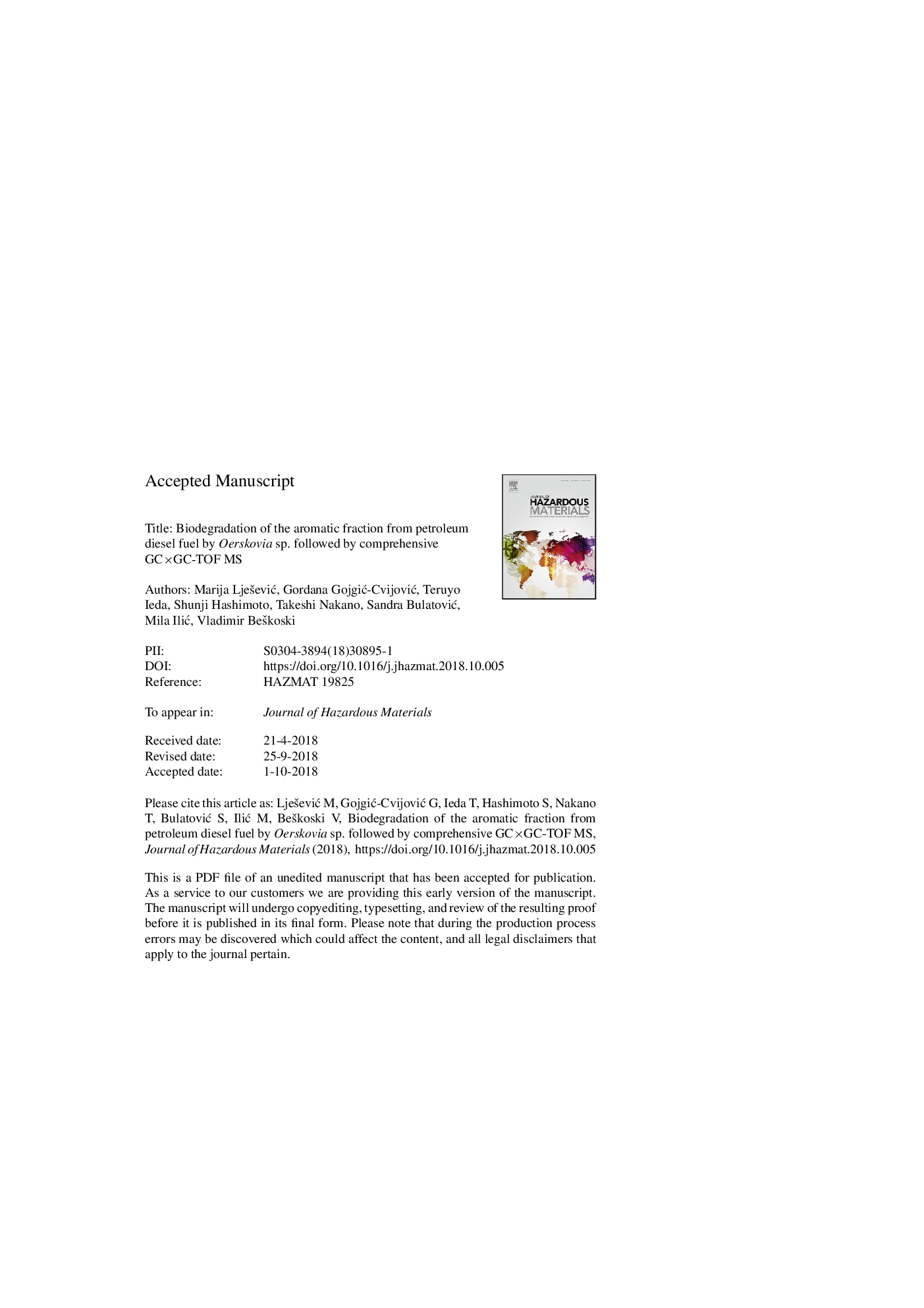| Article ID | Journal | Published Year | Pages | File Type |
|---|---|---|---|---|
| 11009905 | Journal of Hazardous Materials | 2019 | 15 Pages |
Abstract
Polycyclic aromatic hydrocarbons (PAHs) from petroleum and fossil fuels are one of the most dominant pollutants in the environment. Since aromatic fraction from petroleum diesel fuel is mainly composed of PAHs, it is important to discover new microorganisms that can biodegrade these compounds. This article describes the biodegradation of the aromatic fraction separated from petroleum diesel fuel using the strain Oerskovia sp. CHP-ZH25 isolated from petroleum oil-contaminated soil. The biodegradation was monitored by gravimetry and GCâÃâGC-TOF MS. An innovative method was applied to visualize degraded compounds in the data provided by a GCâÃâGC-TOF MS. It was shown that Oerskovia sp. CHP-ZH25 degraded 77.4% based on gravimetric analysis within 30 days. Average rate of degradation was 14.4âmg/L/day, 10.5âmg/l/day and 4.0âmg/l/day from 0 to 10 day, 10-20 and 20-30 day, respectively. The order of PAH degradation based on decrease in peak volume after 30 days of incubation was as follows: dibenzothiophene derivativesâ>âbenzo[b]thiophene derivativesâ>ânaphthalene derivativesâ>âacenaphthene derivativesâ>âacenaphthylene/biphenyl derivativesâ>âfluorene derivativesâ>âphenanthrene/anthracene derivatives. Here we demonstrated that Oerskovia sp. CHP-ZH25 could potentially be a suitable candidate for use in bioremediation of environments polluted with different PAHs.
Keywords
Related Topics
Physical Sciences and Engineering
Chemical Engineering
Chemical Health and Safety
Authors
Marija LjeÅ¡eviÄ, Gordana GojgiÄ-CvijoviÄ, Teruyo Ieda, Shunji Hashimoto, Takeshi Nakano, Sandra BulatoviÄ, Mila IliÄ, Vladimir BeÅ¡koski,
